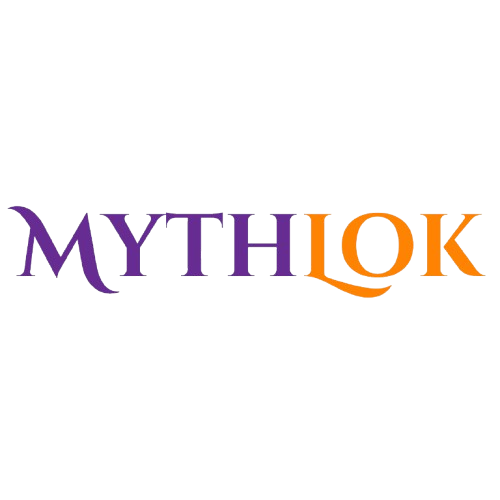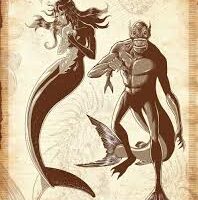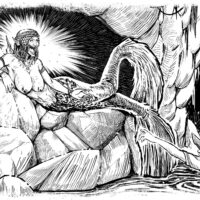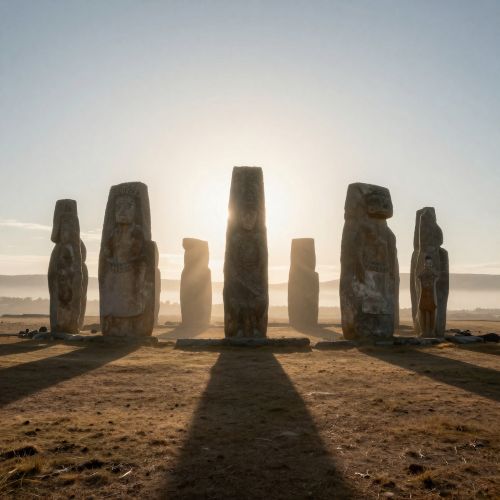Mambubuno : The Wrestling Merman
Listen
At a glance
| Description | |
|---|---|
| Origin | Philippine Mythology |
| Classification | Hybrids |
| Family Members | N/A |
| Region | Philippines |
| Associated With | Abduction, Wrestling |
Mambubuno
Introduction
The Mambubuno is a fascinating figure in Philippine mythology, deeply embedded in the lore of the Zambals, an indigenous group from the province of Zambales. Known as “the one who wrestles,” this mythical creature inhabits freshwater environments such as rivers and brooks. It is often associated with the hidden, glittering caves beneath riverbanks, which are believed to house untold riches of gold and gems. Unlike more widely known beings like the sirena, the Mambubuno carries with it a more primal sense of physical dominance and mysterious enchantment. Its legend reflects the Philippines’ deep-rooted connection to water and its dangerous beauty, shaped by the country’s archipelagic landscape and enriched by layers of indigenous belief systems and colonial influences.
Physical Traits
Visually striking and unlike the typical Western mermaid, the Mambubuno has a distinct form that captures the imagination. Its most unique feature is its double tail—two fish tails instead of one—which sets it apart from other sea-dwelling creatures. In males, these tails are coated in dark, rough, and slippery scales that give them a fearsome presence. Female Mambubuno, however, are described with more radiant hues—bright, shimmering scales in multiple colors that glimmer like gemstones in the sunlight. From the waist up, both male and female Mambubuno have a human appearance, typically youthful and attractive, although their fishy scent betrays their non-human origins. This blend of beauty and beastliness serves as both a lure and a warning to those who encounter them.
Family
Mambubuno myths don’t offer a detailed genealogy, unlike other mythological characters whose origins are carefully documented in oral traditions. They are generally seen as part of a broader class of aquatic beings common in Filipino folklore, sharing attributes with sirena, syokoy, ugkoy, and kataw. While there is no canonical family tree for the Mambubuno, some folktales suggest they might be distant kin to these creatures, possibly descended from primordial water deities or spirits. In a few regional stories, mermaid-like beings such as the Mambubuno are said to form relationships with humans, resulting in unions that blur the line between myth and reality. These narratives often center on longing, captivity, and transformation, themes deeply embedded in the wider landscape of Filipino storytelling.
Other names
Although “Mambubuno” is the primary name used by the Zambals, similar aquatic beings appear across the Philippines under various regional names. In the Visayas, the term “kataw” describes a noble class of merfolk, while “syokoy” and “ugkoy” are often used in Tagalog-speaking areas to refer to more monstrous versions of sea spirits. In many parts of the archipelago, the Spanish-influenced term “sirena” has become the generic label for mermaids due to colonial influence. While these names represent different cultural lenses, they collectively embody the archipelagic fear and fascination with the sea. The Mambubuno’s specific identity as a double-tailed wrestler, however, remains a distinctive trait unique to Zambales folklore.
Powers and Abilities
As its name implies, the Mambubuno’s defining trait is its physical dominance. This creature is known to wrestle or overpower unsuspecting individuals who approach its territory, especially curious children or wandering travelers. Beyond sheer strength, the Mambubuno possesses mystical qualities common to aquatic spirits in Southeast Asian mythology. One of its most intriguing powers is its ability to manipulate time—stories describe that a single day spent in its underwater realm is equivalent to a year on land. Once lured beneath the surface, captives are able to breathe underwater and live harmoniously with the creature, though this paradise is deceptive. Attempting to leave the Mambubuno’s domain often leads to tragedy, with the escapee either drowned or returned to land only to find that decades have passed. The Mambubuno also enchants with its voice, capable of drawing victims toward the water through song or lament, a tactic shared with many other merfolk traditions worldwide.
Modern Day Influence
Despite being one of the more obscure figures in Philippine mythology, the Mambubuno is enjoying a quiet resurgence in modern culture. Its double-tailed form has inspired stylized illustrations, often appearing in online folklore communities, sticker art, and digital storytelling projects. Younger generations interested in rediscovering native folklore are increasingly drawn to unique beings like the Mambubuno, whose characteristics deviate from commercialized depictions of mermaids. In some local festivals or folk storytelling events, especially within Zambales, tales of the Mambubuno are retold to preserve cultural heritage. Moreover, its symbolism resonates in broader conversations about the ocean’s dual nature—both nourishing and destructive. The Mambubuno encapsulates that tension, making it a powerful metaphor for environmental awareness and cultural identity. Its portrayal in literature and visual art continues to evolve, ensuring its place in the evolving tapestry of Filipino myth.
Related Images
Source
Ramos, M. (1990). Creatures of Midnight. Phoenix Publishing.
delos Reyes, I. (1889). El Folk-lore Filipino. Manila: Imprenta de Santos y Bernal.
The Merfolk of Philippine Folklore – The Aswang Project. (2018). https://www.aswangproject.com/the-merfolk-of-philippine-folklore/
Contributors to Wikimedia projects. (n.d.). Mermaid – Wikipedia. https://en.wikipedia.org/wiki/Mermaid
Contributors to Cryptid Wiki. (2016). Creatures and Beings of Philippine Folklore and Lower Mythology. https://cryptidz.fandom.com/wiki/Creatures_and_Beings_of_Philippine_Folklore_and_Lower_Mythology
Mambubuno – MythMuseum. (n.d.). https://mythmuseum.weebly.com/mambubuno.html
admin. (2025). Mambubuno – Philippine Spirits. https://phspirits.com/mambubuno/
Frequently Asked Questions
What is lorem Ipsum?
I am text block. Click edit button to change this text. Lorem ipsum dolor sit amet, consectetur adipiscing elit. Ut elit tellus, luctus nec ullamcorper mattis, pulvinar dapibus leo.
What is lorem Ipsum?
I am text block. Click edit button to change this text. Lorem ipsum dolor sit amet, consectetur adipiscing elit. Ut elit tellus, luctus nec ullamcorper mattis, pulvinar dapibus leo.
What is lorem Ipsum?
I am text block. Click edit button to change this text. Lorem ipsum dolor sit amet, consectetur adipiscing elit. Ut elit tellus, luctus nec ullamcorper mattis, pulvinar dapibus leo.
What is lorem Ipsum?
I am text block. Click edit button to change this text. Lorem ipsum dolor sit amet, consectetur adipiscing elit. Ut elit tellus, luctus nec ullamcorper mattis, pulvinar dapibus leo.
What is lorem Ipsum?
I am text block. Click edit button to change this text. Lorem ipsum dolor sit amet, consectetur adipiscing elit. Ut elit tellus, luctus nec ullamcorper mattis, pulvinar dapibus leo.







